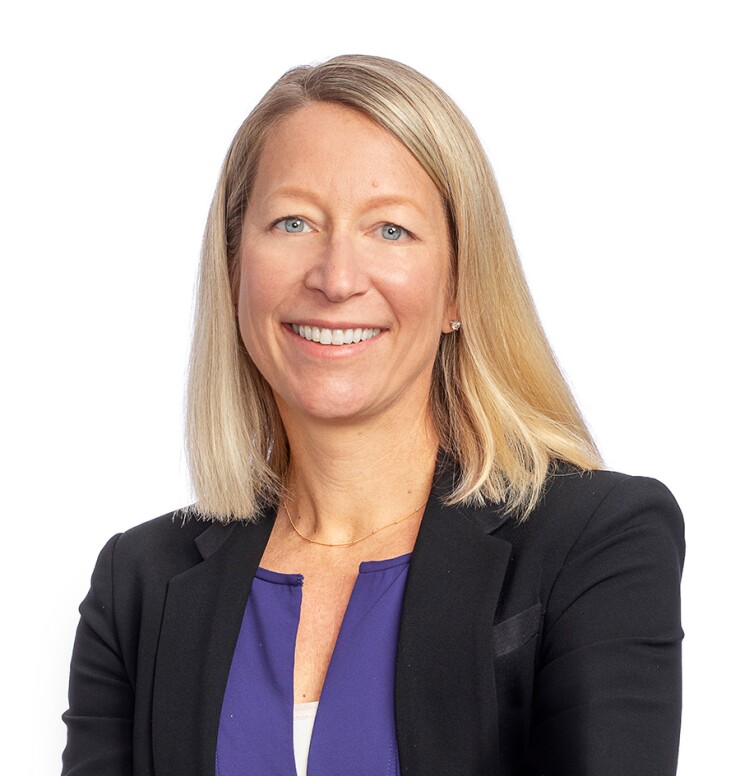Recently launched Jenius Bank has put some backward spin on the typical digital banking model.
Jenius, the digital-only division of Los Angeles-based Manufacturers Bank, unveiled its inaugural product last month, a personal loan marketed on the Credit Karma personal finance platform. Most digital banks have led with a deposit offering, Jenius President John Rosenfeld said in an interview.
Rosenfeld should know. He helped the Providence, Rhode Island-based Citizens Financial Group

It's a strategy that continues to have legs. On Wednesday, the $6.7 billion-asset Cambridge Savings Bank reported that Ivy Bank,
That total amounts to more than 10% of Cambridge Savings Bank's $5.1 billion deposit portfolio.
"We're very proud of the performance of Ivy Bank and how it's helped contribute to Cambridge Savings Bank's growth goals," Chief Customer Officer Katie Catlender said.
The digital channel became even more valuable after the wave of high-profile bank failures this spring created an industrywide premium on deposits. "Especially right now … the deposit funding through a digital channel and having that ease of a customer being able to move their money to safe and secure places has been instrumental for us," Catlender said.
For the $4.5 billion-asset Manufacturers, itself a subsidiary of Japanese-based banking giant Sumitomo Mitsui Financial Group, the calculus was different. With a loan-to-deposit ratio of 85%, Manufacturers already generates an ample stream of deposits to fund lending. Moreover, the 60-year-old Manufacturers can count on backing from its $2 trillion-asset parent company.
"In our particular circumstance, at the time we started [Jenius], we had plenty of deposits. That was not the challenge," Rosenfeld said. "We figured the first thing we needed to do was develop a lending product. Deposits capability is a little less complex to build, so we said, 'Let's put that on the back burner.'"
To be sure, personal loans are a starting point for Jenius, which the $4.5 billion-asset Manufacturers

Jenius is "on track" to introduce a savings product later this year and also plans to roll out a mobile app as well as a tool that lets users aggregate and manage accounts from a single site, Rosenfeld said. From there, Jenius plans to debut a major product group — think credit cards, auto loans, student loans — every year. "We're not really fixing the sequence," Rosenfeld said. "We want to keep it fungible based on when the best opportunity to introduce a product might be."
The ultimate goal is to build Jenius into a full-service online-only bank. "Our strategy is more akin to what Marcus [was] trying to do, to really build a new consumer bank, which means we want both sides of the balance sheet," Rosenfeld said.
In a July 11 press release announcing the rollout of the personal loan product, Sumitomo Mitsui cited Jenius as a means to expand its American presence, "providing scale and growth potential in the U.S. consumer banking market." It's a major undertaking. Jenius' staff has grown to about 300 people, according to Rosenfeld.
Cambridge Savings Bank appears to be moving in the direction of full service with Ivy. After building a brand with deposit products, certificates of deposit and a high-yield savings account, the Cambridge, Massachusetts-based company plans to introduce a credit card later this year. "We would love to get to a point where we are offering more of an operating account, a transactional account capability for our customers nationwide," Catlender added. "That is something that's on the horizon, as well."
To be sure, not all online-only bank projects have succeeded. Jenius' rollout comes about a month after Goldman Sachs announced the sale of approximately $1 billion in consumer loans generated by Marcus. The move further highlighted
Rosenfeld, for his part, is convinced Sumitomo Matsui and Manufacturers have brought Jenius to market at precisely the right moment, despite fears of an impending recession.
"People ask me, 'John, is this a good time to launch loans?'" Rosenfeld said. "I ask them, 'Tell me a better time?' Every other bank is going to be concerned about losing money on their existing loan books. I don't have an existing loan book. … As everyone else is running out the door, I'm, running in. There's a lot more seats available."






